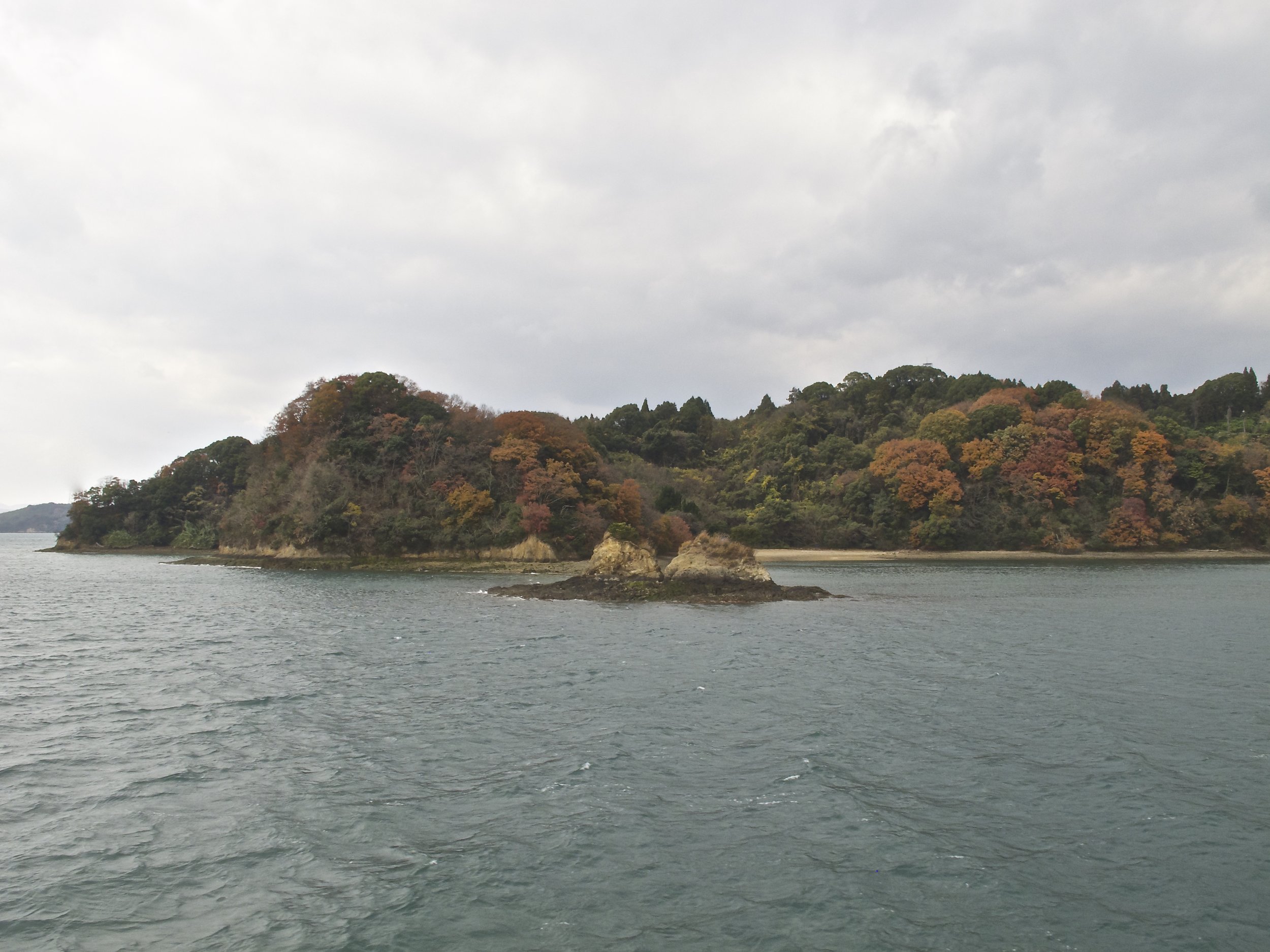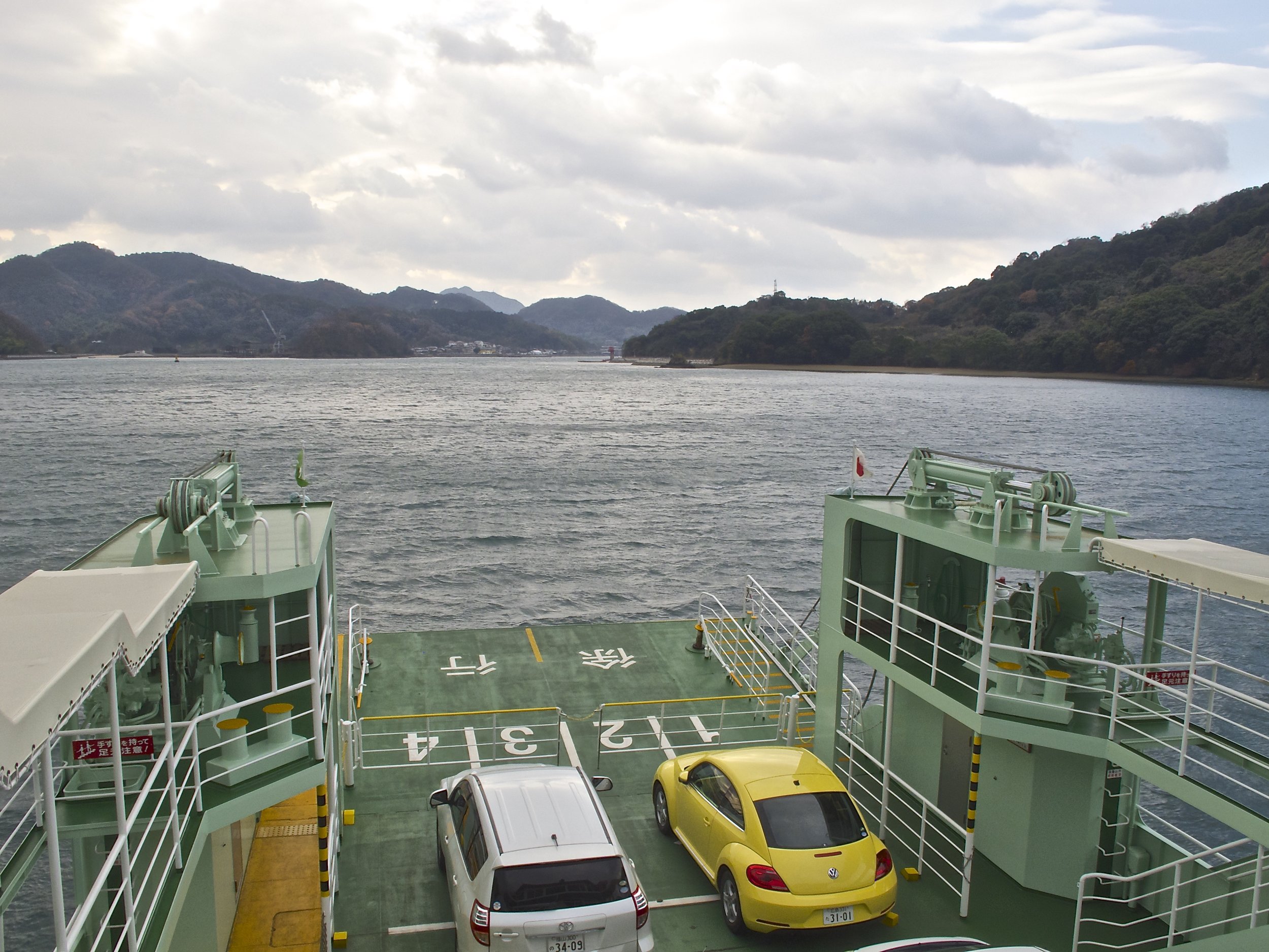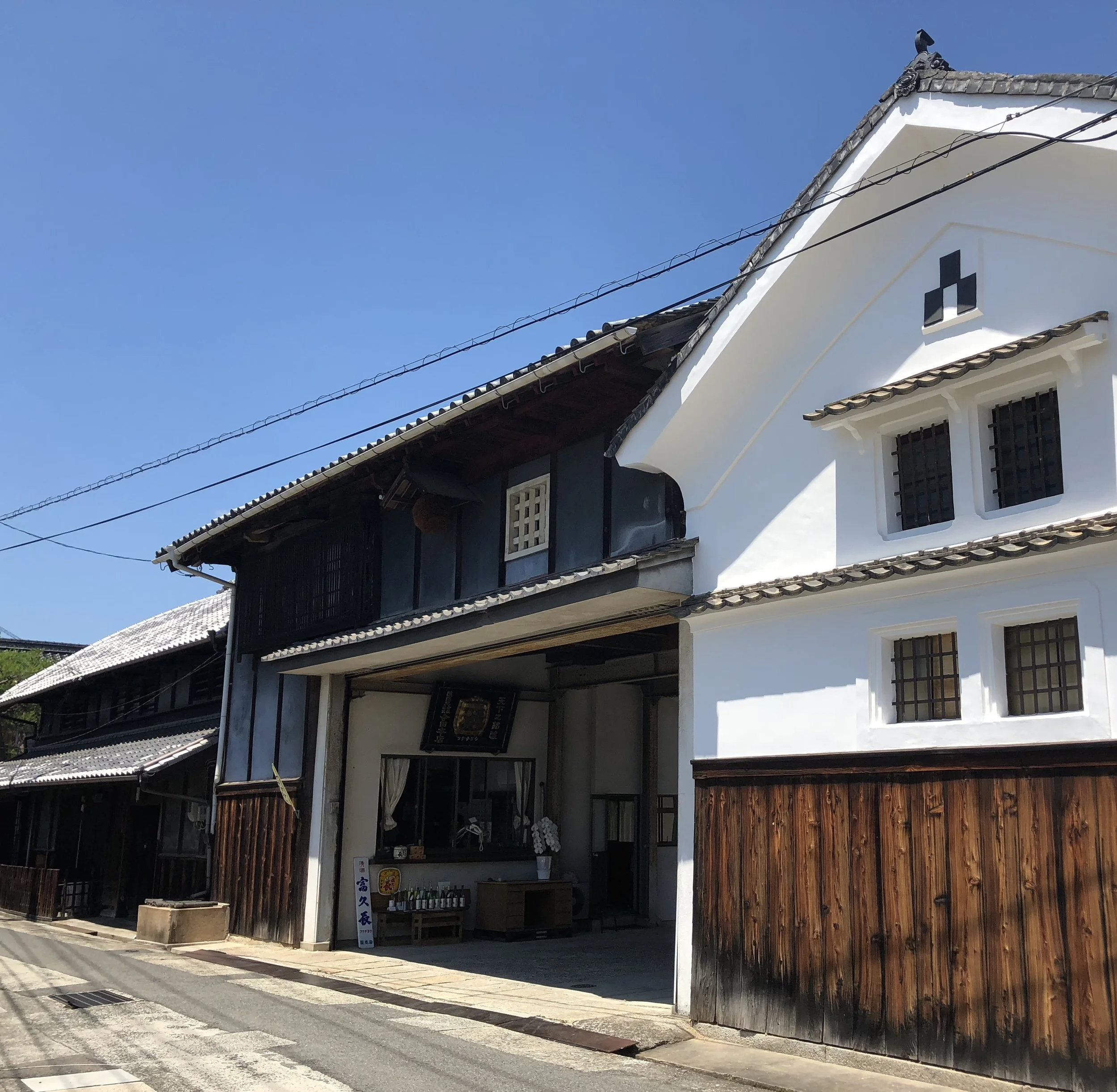Farm Suzuki
By applying growing methods developed by French master oystermen to some of Japan’s best natural resources, Takashi Suzuki has given new flavor to the Pacific Oyster, helped change the way oysters are eaten in Japan, and restored life to the mariculture of a remote island in the Seto Inland Sea.
Oysters have been cultivated in the gentle and shallow coastal waters off of Hiroshima prefecture in the Seto Inland Sea since the 16th century, and today the oyster farms in the area's many bays and coves are the largest oyster field in the world, producing about 34,000 metric tons of oysters a year, which is roughly 60% of Japan’s winter crop and more than all of the United States’ annual production. This is the home of the Pacific Oyster (Crassostea gigas), which has become the dominant oyster raised around the world because it grows quickly and easily and has an attractive shell and sweeter taste than most other oysters. Nearly all of these oysters are raised for mass-market consumption as oysters are a staple of Japan’s winter diet, when the protein-rich bivalves are considered the "milk of the sea." Found in plastic bags in the refrigerator and freezer cases of any supermarket, they are traditionally eaten grilled, fried, steamed with rice, or in nabe, or hot pot stews.
Pacific Oysters thrive in the Seto Inland Sea because its oyster fields are nutrient-rich, nourished by the abundant marine life, generous fresh water runoff from the surrounding mountains, and mild climate of the nearly land-locked sea. Located at the heart of this oyster growing region, Osakikamijima is one of the Seto Inland Sea’s few large-sized islands still not connected by bridge to the mainland. This has been more of a benefit than inconvenience as it has helped preserve the island’s quiet rural way of life and the pristine nature of its environment while attracting a growing number of people from Japan’s big cities seeking the kind of slow, meaningful life that the island’s small fishing villages and mountainous citrus orchards have to offer. Takashi Suzuki and his family are among those migrants, and since 2011, he has been raising one of the best oysters in Japan at Farm Suzuki.
Oyster "Bonbons"
It’s only been in recent years that oysters have gained status as a delicacy in Japan and eaten raw because of the efforts of oyster farmers like Takashi and his fresh, healthy, and beautifully-flavored Osaki Claires Oysters. Farm Suzuki's oysters have been christened “Kaki Bonbon” or “Oyster Bonbons” by the Japanese media. This is a play on two words. In the dialect of western Japan, obocchama—or more colloquially bonbon—refers to a young man raised in a protected and exclusive environment to become a refined gentleman. And then there is the universal bonbon; a treat comprising an outer coating and a luscious, creamy center. The overall impact of the expression, especially given the holiday season during which the oysters flourish, is to convey a sense of celebration.
Osaki Claires Oysters are matured for only about a month to an average size of 70-90 grams, which is much smaller than most oysters grown in Japan, making them bite-sized morsels that are true bonbons of the sea and something to feast on. Their delicate, beautifully variegated purple, gray, and pearlescent shells house a melting cream of salty-sweet sea richness. They are not the proverbial oyster taste of “kiss of the sea”; Japanese cuisine has many other foods that qualify for that overused phrase. Instead, Osaki Claires Oysters are the classic taste of Seto Inland Sea cuisine—refreshingly light yet flavorful, balanced, slightly sweet.
A Japanese Oyster Raised by French Methods
Originally from Tokyo, Takashi’s dream to make a better Japanese oyster came to him while he studied at Japan’s National Fisheries University. After graduation and a stint working at a shrimp exporting company, Takashi’s journey to Osakikamijima took him first to Marennes-Oleron, France, where the elegantly fluted shell and subtle flavor of the Pacific Oyster had been perfected to become the “Rolls-Royce” of the oyster world. More properly called Fine de Claires and Fine de Claires Verte oysters because of the flavor-enhancing green gill that emerges from January to April, Pacific Oysters are finished there according to strict growing rules in former salt-making ponds, or claires, to make them sweeter, fatter, and richer by nourishing them with a combination of fresh and seawater and the abundance of plankton (oyster food) that grows in the ponds’ warm, shallow waters.
Returning to Japan, Takashi found the ideal conditions for raising claires oysters on Osakikamijima. An island that according to Takashi “has the most transparent sea to be found anywhere in Japan,” it was once the center of the country’s enden, or tidal pond, salt-making industry during the Edo era (1603-1868) up until 1955. In addition to acres of unused salt-making ponds, the island’s blessings include the nutrient-rich waters of the surrounding Seto Inland Sea, pure spring water bubbling up from the base of Mt. Kannonmine, and a perfect oyster-growing climate—warm summer months during which the oysters flourish, followed by cool winters when they become fatter and richer to protect themselves from the cold.
Takashi’s farming method fundamentally mirrors that of Marennes-Oleron, but with several refinements to enhance the health, flavor, and living conditions of his oysters. He first breeds the spats (baby oysters) in buckets in the pond, and then suspends them in rows of plastic cages. This provides a number of benefits. It keeps the oysters in closer contact with the life- and flavor-giving plankton that thrives near the surface of the water and also shelters them so that they develop a more delicate, thinner shell—the beauty of which is one of the attractions of Pacific Oysters. The plastic cages also help prevent contamination. The widespread use of natural bamboo racks to suspend oysters elsewhere in the region has periodically led to bacterial outbreaks among the crops farmed in the open sea.
Takashi also raises Shima Oysters (Crassostera nippona), a species unique to the Hiroshima Bay area, in the pond, creating a larger, juicier oyster with silky sweet flesh and a distinctive white stripe flared on its rounded, flat shell. Other denizens of the pond are Kuruma Prawns, or Japanese Tiger Prawns, and clams, both bottom-dwelling shellfish that benefit from the nutrients descending from the oysters hanging above as well as from the clean sweet water of the pond.
Are Osaki Claires Oysters better than their French cousins? An artisanal purist might automatically say so given that Farm Suzuki’s Pacific Oysters are being raised in their natural habitat. But this is beside the point. The true benefits for Osaki Claires Oysters are the natural and harmonious marine environment that Takashi has created and the care and attention that he devotes to his small-scale farm; he currently only produces 300,000 oysters a year at his 150,000 square meter pond.
Farm Suzuki’s oysters can be found at the growing number of oyster bars in Tokyo and other major cities. Half of the farm’s annual oyster crop is exported to restaurants in the great oyster-eating markets of Australia, the United States, and Europe, and Farm Suzuki’s success at home and abroad has been a boon to the island. After the making of sea salt ended on Osakikamijima, a foray into shrimp farming didn’t last long due to competition from cheaper suppliers from elsewhere in Asia. But Takashi’s dream to make the best possible Pacific Oyster in a natural, sustainable way has also produced a premium, value-added product that is restoring competitiveness to the island’s mariculture.
Story & Photos: Tom Schiller
Farm Suzuki ファームスズキ
37-2 Higashino Tarumi, Osakikamijima, Toyota-gun, Hiroshima Prefecture 725-0231
Tel: +81 (0846) 65 3911
Web: www.farmsuzuki.jp/english/
For those who can't get to the farm, Farm Suzuki has a mail order service. Given the reliability of Japan's cold-pack, over-night delivery service, you'll get the shellfish almost as fresh as at the farm.
Getting There
Part of the romance of enjoying Farm Suzuki’s oysters is the journey to Osakikamijima. Ferries from several locations take you there through what is the most picturesque part of the Seto Inland Sea. The most direct route and one that offers several options, enabling a day trip to the island, are boats from the country town of Takehara, which is a lively and historic town on the Honshu Island mainland that is well worth a visit. A small, 24-passenger boat that connects several islands makes its first stop at Meibaru on Osakikamijima in a mere 11 minutes. Farm Suzuki is just a 10-minute walk around the corner. There are six boats running daily between Takehara and Meibaru. Two other larger ferry lines run more frequently from Takehara to the ports of Tarumi and Shiromizu on Osakikamijima, taking about 35 minutes. These are good if you have a car or bicycle. Takehara can be reached by switching from the Sanyo Shinkansen bullet train to the local Kure Line at either the cities of Mihara or Hiroshima. Public buses and taxis are available on all the islands to help you get around. The area is a mecca for cyclists, which is another way to explore the area once you get there.











